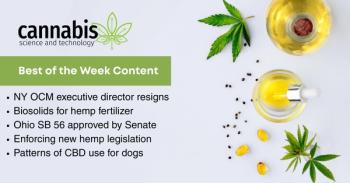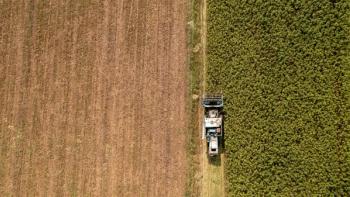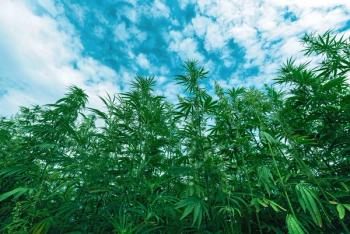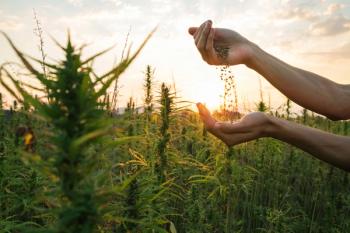
Cannabis Science and Technology
- June 2020
- Volume 3
- Issue 5
Starting a QC Cannabis or Hemp Laboratory: Testing Requirements, Initial Expenses, and ROI
How quickly can a cannabis or hemp testing laboratory see return on investment?
This article demonstrates how quickly a cannabis or hemp testing laboratory can see return on investment (ROI), despite a high initial investment in instruments and major consumables necessary to conduct key analytical testing. It provides information on the required instrumentation, approximate cost of the instrumentation, revenue per analysis, samples analyzed per week based on an 8-h day, break-even time after instrument purchase, and monthly expenses for major consumables.
As the cannabis and hemp industry expands worldwide, the need for quality control (QC) becomes even more essential to ensure continued growth. Just as foods and drugs are monitored to ensure accurate labeling and that they are free of contaminants, the same concept holds true with cannabis and hemp.
This testing requires a suite of analytical instruments. This article provides information on the required instrumentation, approximate cost of the instrumentation, revenue per analysis, samples analyzed per week based on an 8-h day, break-even time after instrument purchase, and monthly expenses for major consumables. The cost per analysis will vary based on location and should be verified. Information presented here is based on research in the US market.
This research does not provide details on building costs, rent, taxes, utilities, benches, ventilation systems, personnel, and so forth because there are too many variables. In addition, the expenses listed only include the more expensive items and not things like vials, caps, and certain other consumables. Also, it has been estimated that other laboratory supplies such as pipettes, gloves, vortexes, spatulas, cleaning wipes, dispenser for solvents, flammable solvent cabinet, and so on will require another $30,000.
Cannabinoid Profile Analysis
Cannabinoids are generally measured by techniques such as high-performance liquid chromatography (HPLC), ultrahigh-pressure liquid chromatography (UHPLC), liquid chromatography–mass spectrometry (LC–MS), and liquid chromatography–tandem mass spectrometry (LC–MS/MS).
UHPLC analysis times can be twice as fast as those using conventional HPLC, making it a more efficient technique, although it’s not as rugged as HPLC. Table I provides data when conducting a 10-min analysis of 11 cannabinoids using HPLC. Increasing the number of cannabinoids to 15 will add 5 min to the analysis time.
For an 11-cannabinoid analysis, the revenue is typically in the $50–75 range, but Table I will use the lower $50 value because it is more prevalent according to research. With a run time of 10 min resulting in 48 samples per day, the revenue would be $12,000 per week, meaning the instrument will be paid off in less than one month. Table II provides a monthly cost of the more expensive consumables.
Terpene Profile Analysis
Consumers are very interested in terpene profiles because of the different aromas and possible medicinal benefits. The combination of terpenes and cannabinoids contribute to the “entourage effect” because of the synergy between these two classes of compounds.
Headspace–gas chromatography–mass spectrometry (HS-GC–MS) is one method for performing terpene analysis. With this method, the terpenes are separated from most of the 500 compounds in cannabis. The result is a clean spectrum because fewer compounds are being analyzed, which in turn leads to a longer column life.
Table III presents data for an analysis time of 12 min. This time could increase based on the number of terpenes being analyzed. It has been reported that there are more than 5000 terpenes in nature and 200 in cannabis, although most profiles analyzed contain fewer than 20. Revenue is typically in the range of $120 per sample. At 200 samples per week, the revenue will be $24,000 per week. The break-even point for the instrument is typically less than one month. The most prominent consumable is helium at $500/month. Adding vials and caps will bring the total monthly cost of consumables to approximately $1100. As mentioned earlier, because the sample is very clean, the column would only need to be replaced yearly.
Heavy Metal Contaminant Analysis
Food labels often contain nutrient information, such as sodium, potassium, calcium, and magnesium, which can be analyzed by inductively coupled plasma-mass spectrometry (ICP-MS). ICP-MS is also used to analyze toxic heavy metals, including the “big four” of arsenic (As), cadmium (Cd), lead (Pb), and mercury (Hg)-an analysis required by most states. In addition, various states require the analysis of other elements such as silver (Ag), barium (Ba), chromium (Cr), copper (Cu), iron (Fe), manganese (Mn), nickel (Ni), antimony (Sb), selenium (Se), and zinc (Zn). With ICP-MS, the analysis time is the same whether analyzing one or multiple elements because the technology can perform simultaneous analyses.
Expected revenue per sample is $75 for the “big four.” Analysis time listed in Table IV is 5 min, but there are accessories that decrease that time to approximately 2 min. The longer time was chosen because metals analysis is the fastest analysis in a cannabis or hemp laboratory and thus does not act as a bottleneck to obtaining a full certificate of analysis of all compound classes. Up to 480 samples can be analyzed per week for a revenue of $36,000. Return on investment (ROI) for an ICP-MS is less than one month.
Table V shows some of the more expensive consumable items, such as argon, a torch, and the cone assembly. The average cost of analysis is approximately $1/sample for all consumables.
Residual Pesticide and Mycotoxin Contaminant Analysis
Since cannabis is illegal in the US on the federal level, the lists of pesticides, and their concentrations, to analyze vary by state. For example, while Oregon and California both include a high number of pesticides on their lists, the number varies, with 59 pesticides on Oregon’s list and 66 on California’s list. The maximum residual limit (MRL) values also vary within each state. Many other states follow the Oregon or California pesticide requirements, though most have made modifications. Canada has taken a different approach, requiring 96 pesticides to be analyzed and, in many cases, at much lower levels. As for hemp, though it’s federally legal in the US, there is no specific pesticide list. By Environmental Protection Agency (EPA) regulations, if a pesticide is not listed for a commodity, the default tolerance is set at 10 ppb as with any other agriculture product.
Pesticides are generally analyzed by LC–MS/MS using electrospray ionization (ESI); however, atmospheric pressure chemical ionization (APCI) may be required depending on the regulations being followed. In some cases, APCI has replaced traditional GC–MS/MS methods. Since GC–MS/MS may be more sensitive for a few select compounds, consult your manufacturer about specific requirements. Pesticide analysis is generally in the $150–225 range per sample.
Mycotoxin ochratoxin A and aflatoxins B1, B2, G1, and G2 are required for cannabis analysis by many states. Typically, mycotoxin or aflatoxin revenue is approximately $75 per sample. Fortunately, pesticides and mycotoxins or aflatoxins can be analyzed in the same run using LC–MS/MS. The expected revenue for both compound classes is $225–300. In the example shown in Table VI, the lower value of $225 was selected. Up to 200 samples per week can be analyzed, resulting in revenue of $45,000 per week. At this rate, the break-even point on the most expensive instrument used in QC cannabis testing is approximately nine weeks.
Table VII shows examples of monthly expenses for operating an LC–MS/MS for cannabis analysis. Consumables include nitrogen gas, solvents, extraction chemicals, guard column, and analytical column. Monthly expenses will be under $5000 per month.
Residual Solvent Contaminant Analysis
Solvents are used to extract the cannabinoids and terpenes, and what remains on the product are referred to as residual solvents. Residual solvents are analyzed using a HS-GC–MS, the same instrument and autosampler used for the analysis of terpenes. Thus, only one instrument may be needed for both of these analyses.
Table VIII shows data based on an analysis time of 14 min for analyzing California’s 20 Category I and II compounds. Expected revenue is $100 per sample. At a rate of 171 samples per week, the weekly revenue would be $17,100, and break-even would be about one and a half months. Expenses are like those described earlier under terpenes.
Moisture Balance and Water Activity Meter
All analytical measurements described earlier require an analytical balance. Another type of balance is a moisture balance. Moisture balances can help improve the accuracy of analytical techniques, since results are determined on a dry weight basis. Also, if the moisture content is above 12%, the product is prone to mold growth. Some states also require water activity meters, especially for storage of product, to prevent mold growth.
Shown in Table IX is the ROI based on revenue of $20/sample and an analysis time of 10 min. Measuring 240 samples per week results in a weekly revenue of $4800, meaning the balance is paid off in less than half a week.
Pathogen Analysis
Most states require measurements of six pathogens, including pathogenic E. coli, Salmonella, and four species of Aspergillus: A. fumigatus, A. flavus, A. niger, and A. terreus. These are detected using microarray technology. Typically, revenue is $80 per sample. If analyzing 240 samples per week, the weekly revenue will be $19,200 with a break-even point of two and a half weeks as shown in Table X.
Expenses for pathogen analysis are shown in Table XI. The consumables are more expensive than for other technologies. The table also includes data for a laboratory technician working 2.5 h per day at $30/h. Monthly revenue for four weeks would be $76,800, and expenses would be $31,308 for net of $45,492.
Conclusion
This article demonstrates how quickly a cannabis or hemp testing laboratory can see ROI, despite a high initial investment in instruments and major consumables to conduct key analytical testing including HPLC and HS-GC–MS for cannabinoids and terpenes as well as residual solvents, ICP-MS for heavy metals, LC–MS/MS for pesticides and mycotoxins, and microarray technology for pathogens. Also discussed are analytical balances, moisture balances, and water activity meters. Variable expenses related to geographical location are not included as the information would be exhaustive for this article. The ROI calculations are intended for general reference only; Shimadzu does not guarantee testing volumes nor prices.
References
- B. Clifford, C. Young, A. Owens, J. Mott, and R. Lieberman, Cannabis Science and Technology3(1), 34–42 (2020).
- B. Clifford, H. Reece, J. Dahl, and V.i Johnson, Terpenes & Testing May/June (2019).
About the Author
Dr. Robert (Bob) Clifford received his bachelor’s degree from Glassboro State College, now Rowan University, in New Jersey, his master’s degree from Villanova University in Pennsylvania, and his PhD from George Washington University in Washington, D.C. He has published and presented more than 125 papers in the fields of food, pharmaceutical, environmental, energy, geology, material science, photonics, and cannabis. He has been with Shimadzu Scientific Instruments in Columbia, Maryland, for 28 years in a variety of roles. He currently serves as general manager of marketing. Direct correspondence to:
How to Cite this Article
B. Clifford, Cannabis Science and Technology3(5), 25-29 (2020).
Articles in this issue
over 5 years ago
Hope on the Hemp Testing Horizonover 5 years ago
Everything Old is New Again: Cannabis Returns to USPover 5 years ago
A Tribute to the Life and Legacy of Charlotte Figiover 5 years ago
A Chemist’s Guide to the COVID-19 Outbreakover 5 years ago
Spring 2020 CANN Virtual Symposium Meeting ReportNewsletter
Unlock the latest breakthroughs in cannabis science—subscribe now to get expert insights, research, and industry updates delivered to your inbox.





